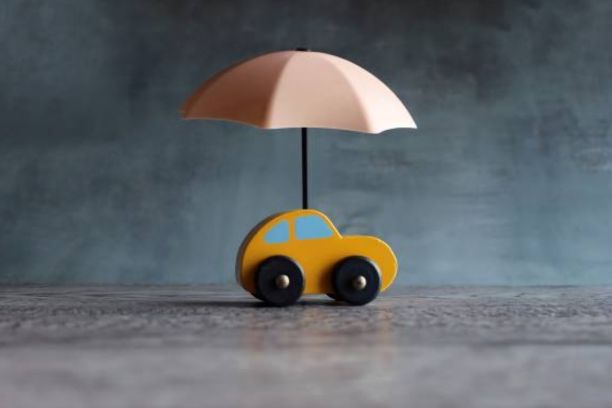The perception of heat, and what constitutes a “hot” temperature, is a matter of subjectivity influenced by numerous factors. One of these factors is the geographical location and climate to which individuals are accustomed. For some, 80 degrees Fahrenheit, or approximately 27 degrees Celsius, may be considered a pleasant and mild day. In contrast, others may find it sweltering and uncomfortable.
However, the concept of whether 80 degrees is hot extends beyond mere temperature readings; it encompasses a broader understanding of climatic, cultural, and personal contexts that shape our perception of heat.
If you find that the temperatures will be in the 80s, you may question if your outdoor plans would be too hot. Here’s all you need to know about whether 80°F is too hot.
Table of contents
Is 80 Degrees Hot?
Yes, 80 degrees is hot under some circumstances. Temperatures in the 70-degree Fahrenheit range are the most pleasant for humans.
The pain comes when the temperature rises into the 80s. There are a few elements, though, that might make 80 degrees acceptable or insufferable.
Why Is 80 Degrees Considered Hot?
Here are a few reasons why 0degrees is considered hot:
1. Tolerance
Your tolerance is a huge element in determining whether 80 degrees feels hot or not. People who live in locations with colder temperatures all year round, for example, will find 80 degrees scorching.
Those who live in locations with warm or hot weather all year will not regard 80 degrees as hot.
2. Activity
Another reason 80 degrees seems hot is when you’re doing something that needs a lot of physical movement.
If you’re hosting a party and there will be a lot of physical activity, such as racing, dancing, or swimming, it will be hot. This is because you are not only coping with 80-degree temperatures, but you are also producing heat. Your body heats up as you engage in physical exercise.
READ ALSO: Is the Sandlot Based on a True Story? (Explained)
3. Total Sun Exposure
When you have complete sun exposure, 80 degrees is one of the hottest temperatures. This indicates that there is no cloud cover. Because there is nothing to momentarily block the light, you are always exposed to the full force of the sun’s rays. Because you don’t get a break, this might make you feel quite heated.
However, on a foggy day, 80 degrees may not seem as hot. This is because the clouds give protection from the sun’s beams.
4. Relative Humidity
The humidity in the air can also influence whether 80 degrees seems hot. The amount of moisture in the air is indicated by humidity.
Because humidity dehydrates you, it can make an 80-degree day feel even hotter. When you’re dehydrated, your body doesn’t have enough water to sweat out.
As a result, your body is unable to expel the heat it is experiencing. Sweating is the most common way for people to remain cool. You won’t be able to stay cool if you can’t sweat.
When there is humidity on top of 80 degrees, 80 degrees might feel hot. However, if the humidity is low, 80 degrees does not seem as hot. Instead, you’re met with scorching fire.
SEE ALSO: What are Examples of Savory Foods? (25 Examples)
5. Environment
Another important component in determining whether 80 degrees seems hot or not is the sort of setting you’re in.
Eighty degrees in an open field with no one else around will seem much colder than eighty degrees in a parking lot. This is because grass, trees, and other plants assist in absorbing part of the heat.
They do not reflect it or allow it to fall to the earth. Instead, they absorb it and utilize it to generate energy. That is not true for a parking lot. Because parking lots are often built of cement or asphalt, they reflect the sun’s rays into the atmosphere. As a result, the heat persists.
SEE ALSO: How to Remove Target Security Tag (Easy Procedures)
6. Airflow
Another major factor in how hot 80 degrees might feel is a lack of ventilation. A lack of air might make it feel much hotter than it is.
This is because the human body relies on breezes to keep it cool. When air travels over perspiration, the body feels cooler and more comfortable.
There is nothing to travel over the skin if there is no air. As a result, you’re sweating yet have nothing to assist you in cooling down. This is why scheduling an outside activity on a windy day when it’s 80 degrees is preferable to scheduling an activity when it’s not breezy.
Is 80 Degrees Hot Compared to Global Averages?
On a global scale, 80 degrees Fahrenheit is warmer than the average temperature in many parts of the world. However, in some regions with hot and arid climates, it may be considered mild or even cool.
Do Dark Coloured Cloths Generate Heat In 80 Degrees?
Yes, dark-colored clothing can absorb more heat when exposed to sunlight compared to light-colored clothing. In 80-degree Fahrenheit (approximately 27 degrees Celsius) weather, wearing dark-colored clothing can make you feel warmer because these clothes absorb and retain more heat from the sun.
That is why wearing white clothes frequently feels the most refreshing. Wear light-colored clothing if you’re going to be outside in 80-degree temperatures.
This reduces the amount of heat absorbed by the clothes, making it easier for your body to regulate its temperature. Wear light-colored clothing to stay cool in 80-degree temperatures.
It is also crucial to wear light-colored clothing in addition to loose-fitting apparel. It’s wonderful to see how colors and light interact.
READ ALSO: How Many Oreos Are in a Pack?
How To Stay Cool in 80-Degree Weather
If the day you plan to do an outdoor activity or attend an event happens to be 80 degrees, you may be wondering what you can do to stay cool and comfortable.
Staying cool in 80-degree (Fahrenheit) weather can be enjoyable with some simple strategies. Here are some tips to help you beat the heat:
- Stay Hydrated: Drink plenty of water throughout the day. Staying hydrated helps regulate your body temperature and keeps you feeling cool.
- Wear Lightweight Clothing: Opt for loose-fitting, breathable clothing made from natural materials like cotton or linen. Light colors also reflect sunlight and can help keep you cooler.
- Use Sunscreen: Protect your skin from the sun’s harmful rays by applying sunscreen with a high SPF. Sunburn can make you feel even hotter.
- Seek Shade: When outdoors, find shade under trees, umbrellas, or awnings to escape the direct sunlight.
- Use Fans and Air Conditioning: If you’re indoors, use fans and air conditioning to cool down your living space. Make sure your AC unit is properly maintained to ensure it functions efficiently.
- Take Cool Showers or Baths: A quick cool shower or bath can help lower your body temperature. You can also wet a cloth and place it on your forehead or neck.
- Stay in the Mornings or Evenings: If possible, plan outdoor activities for the cooler parts of the day, such as the early morning or late evening when temperatures are lower.
- Avoid Strenuous Activities: Try to limit vigorous physical activity during the hottest parts of the day. If you need to exercise, do it in the cooler hours or in an air-conditioned gym.
- Use Cooling Products: Consider using cooling products like a cooling towel, neck fan, or personal fan to help lower your body temperature.
Conclusion
Under the correct circumstances, eighty degrees might feel rather hot to some people. Others may not consider 80 degrees to be particularly hot. However, if you’re feeling hot, follow the techniques above to remain cool in 80-degree temperatures.
References
- thecoldwire.com – Is 80 Degrees Hot? (Explained)






